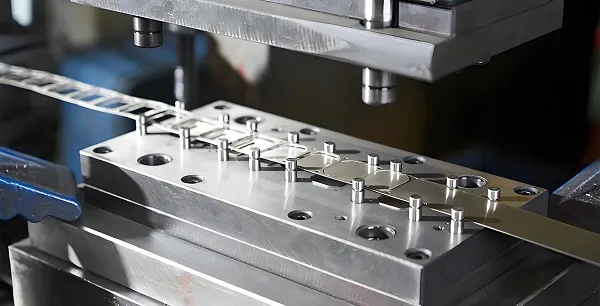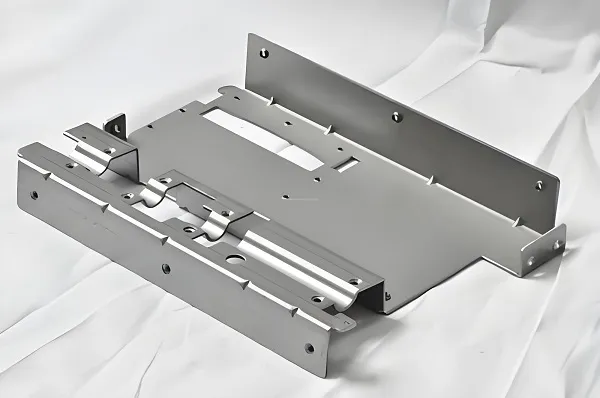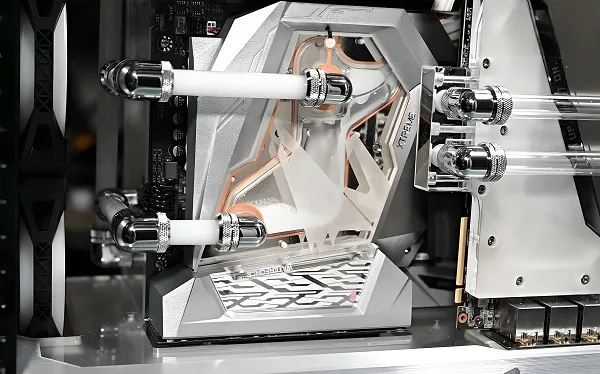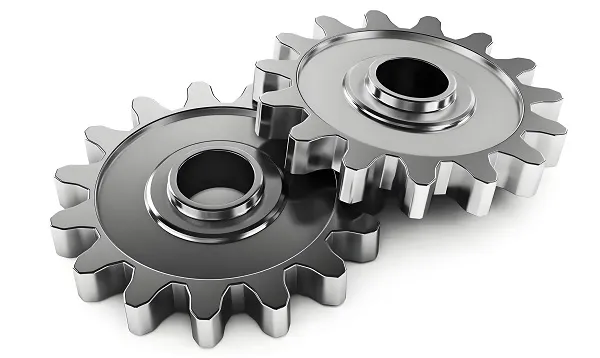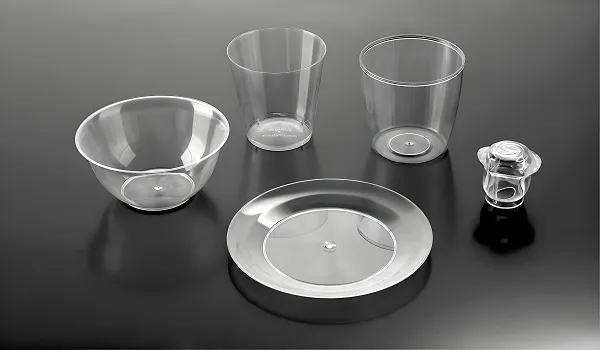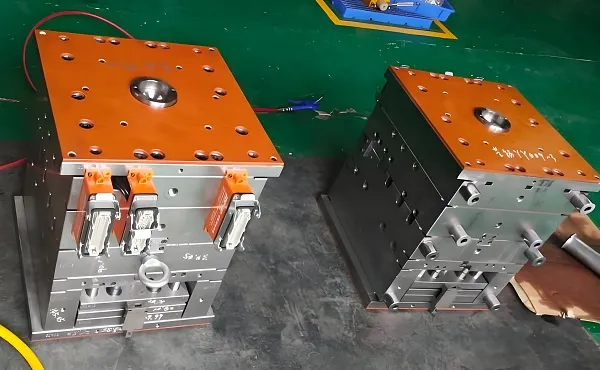Driven by the strong demand of industries such as new energy vehicles, high – end medical equipment, and consumer electronics, the technology of custom injection molding dies is undergoing profound changes. By integrating metal additive manufacturing, digital management, and structural innovation, modern injection molding dies not only achieve micron – level precision control but also shorten the production cycle by more than 30%. This article will deeply analyze the technological innovations and industry trends in the field of custom injection molding dies.
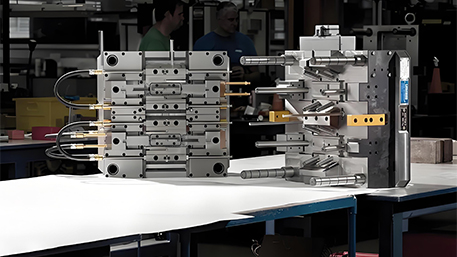
I. Additive Manufacturing Reconstructs the Die Production Paradigm
The mature application of metal 3D printing technology has broken through the process bottlenecks of traditional die manufacturing. A six – laser metal printing system launched by a laser equipment manufacturer, through multi – beam collaborative operation and an intelligent path – planning algorithm, has compressed the manufacturing cycle of die cores from 15 days to 48 hours, and controlled the surface roughness Ra value within 0.8μm. The innovative application of this technology in the hot runner system is particularly remarkable: the integrally manufactured hot nozzle structure reduces the part assembly error to ±0.02mm. Coupled with the conformal cooling channel design, the cooling efficiency is increased by 40%, and the deformation rate of injection – molded parts is reduced by 65%.
In terms of the optimization of the heat – insulation system, a new lattice – structured titanium – alloy heat – insulation spacer, through bionic design, reduces the heat – conduction efficiency by 58% and effectively suppresses die thermal deformation. Measured data shows that for dies with this structure, after 120 hours of continuous production, the cavity temperature fluctuation is controlled within ±2℃, significantly extending the die service life.
The mature application of metal 3D printing technology has broken through the process bottlenecks of traditional die manufacturing. A six – laser metal printing system launched by a laser equipment manufacturer, through multi – beam collaborative operation and an intelligent path – planning algorithm, has compressed the manufacturing cycle of die cores from 15 days to 48 hours, and controlled the surface roughness Ra value within 0.8μm. The innovative application of this technology in the hot runner system is particularly remarkable: the integrally manufactured hot nozzle structure reduces the part assembly error to ±0.02mm. Coupled with the conformal cooling channel design, the cooling efficiency is increased by 40%, and the deformation rate of injection – molded parts is reduced by 65%.
In terms of the optimization of the heat – insulation system, a new lattice – structured titanium – alloy heat – insulation spacer, through bionic design, reduces the heat – conduction efficiency by 58% and effectively suppresses die thermal deformation. Measured data shows that for dies with this structure, after 120 hours of continuous production, the cavity temperature fluctuation is controlled within ±2℃, significantly extending the die service life.
II. Digital Management System Improves Customization Efficiency
A mold enterprise in Ningbo has built a digital management platform covering the entire project cycle by deploying a production operating system. The system integrates an automatic verification function for the design Bill of Materials (BOM). When the material specifications entered by engineers conflict with the standard library, an intelligent reminder can be triggered within 3 seconds, reducing the design error rate by 90%. Combined with the in – depth data – acquisition technology of CNC equipment, automatic statistics of processing man – hours are realized, and the production plan deviation rate has decreased from 18% to 3.2%.
In the trial – mold stage, the platform uses blockchain technology to establish a problem – tracing mechanism, shortening the closed – loop cycle of trial – mold problems from an average of 5 days to 28 hours. After a certain automotive die project applied this system, the first – piece qualification rate increased to 97.3%, and the response time for single – project design changes was compressed to within 30 minutes.
A mold enterprise in Ningbo has built a digital management platform covering the entire project cycle by deploying a production operating system. The system integrates an automatic verification function for the design Bill of Materials (BOM). When the material specifications entered by engineers conflict with the standard library, an intelligent reminder can be triggered within 3 seconds, reducing the design error rate by 90%. Combined with the in – depth data – acquisition technology of CNC equipment, automatic statistics of processing man – hours are realized, and the production plan deviation rate has decreased from 18% to 3.2%.
In the trial – mold stage, the platform uses blockchain technology to establish a problem – tracing mechanism, shortening the closed – loop cycle of trial – mold problems from an average of 5 days to 28 hours. After a certain automotive die project applied this system, the first – piece qualification rate increased to 97.3%, and the response time for single – project design changes was compressed to within 30 minutes.
III. Structural Innovation Breaks through Functional Limits
Two recent invention patents demonstrate the cutting – edge directions of die design. An injection – molding die for key components of the DTMB system, through the combined design of a double – rod I – shaped support buffer plate and a hydraulic damper, reduces the clamping impact force by 72%, effectively solving the molding quality problem of precision electronic components. Another automotive intake hard – pipe die innovatively adopts a modular inner – core structure, reducing the demolding difficulty by 60% and the die assembly man – hours by 45%.
These innovative designs are all based on finite – element analysis and parametric modeling technologies. Through simulation optimization, the uniformity of die stress distribution is increased by 55%. A medical – equipment die case shows that the new structural design has improved the forming accuracy of complex curved surfaces from ±0.15mm to ±0.08mm, meeting the strict requirements of medical – grade products.
Two recent invention patents demonstrate the cutting – edge directions of die design. An injection – molding die for key components of the DTMB system, through the combined design of a double – rod I – shaped support buffer plate and a hydraulic damper, reduces the clamping impact force by 72%, effectively solving the molding quality problem of precision electronic components. Another automotive intake hard – pipe die innovatively adopts a modular inner – core structure, reducing the demolding difficulty by 60% and the die assembly man – hours by 45%.
These innovative designs are all based on finite – element analysis and parametric modeling technologies. Through simulation optimization, the uniformity of die stress distribution is increased by 55%. A medical – equipment die case shows that the new structural design has improved the forming accuracy of complex curved surfaces from ±0.15mm to ±0.08mm, meeting the strict requirements of medical – grade products.
IV. The Dynamic Balance between Standardization and Customization
Industry data shows that the rational selection of standard parts can reduce die costs by more than 35%. The current mainstream precision guide pillars and guide sleeves in the market adopt the 20Cr carburizing and quenching process, with a hardness of HRC58 – 62. Coupled with mirror – polishing technology, the sliding friction coefficient is reduced to 0.012. However, for special working conditions, such as an injection – molding environment with a temperature resistance exceeding 300℃, a customized SKD61 titanium – plated insert pin can extend the service life by 3 times.
Mold enterprises have increased design efficiency by 40% by establishing a parametric standard – part library. For example, in a home – appliance die project, by calling a combination plan of a standard mold base and a customized core, the development cycle was shortened to 12 days, and the cost was reduced by 22%.
Industry data shows that the rational selection of standard parts can reduce die costs by more than 35%. The current mainstream precision guide pillars and guide sleeves in the market adopt the 20Cr carburizing and quenching process, with a hardness of HRC58 – 62. Coupled with mirror – polishing technology, the sliding friction coefficient is reduced to 0.012. However, for special working conditions, such as an injection – molding environment with a temperature resistance exceeding 300℃, a customized SKD61 titanium – plated insert pin can extend the service life by 3 times.
Mold enterprises have increased design efficiency by 40% by establishing a parametric standard – part library. For example, in a home – appliance die project, by calling a combination plan of a standard mold base and a customized core, the development cycle was shortened to 12 days, and the cost was reduced by 22%.
V. Future Technological Evolution Directions
- AI – driven Design Optimization
Machine – learning algorithms can automatically analyze historical molding data and predict potential defects. After a certain enterprise applied this technology, the number of die – design modifications was reduced by 60%, and the trial – mold pass rate increased to 94%. - Green Manufacturing Processes
Breakthroughs have been made in the research and development of bio – based biodegradable mold materials. Their heat – deformation temperature reaches 125℃, and the tensile strength is 18% higher than that of traditional materials, providing a new choice for environmentally friendly injection molding. - Cloud – manufacturing Collaborative Platform
A collaborative design platform based on the industrial Internet can realize the sharing of cross – regional mold resources. Through cloud – based collaboration in a certain project, the off – site collaboration efficiency has been increased by 70%, and the equipment utilization rate has been increased to 89%.
Conclusion
Custom injection – molding dies are shifting from experience – driven to data – driven and from single – manufacturing to ecological collaboration. With the deep integration of additive manufacturing, AI technology, and the industrial Internet, future injection – molding dies will have self – optimization and self – diagnosis capabilities. While ensuring a forming accuracy of ±0.05mm, they will also achieve green management throughout their life cycle. Only by building a dual – wheel – driven system of technological innovation and digital transformation can enterprises take a leading position in the field of high – end manufacturing.
Custom injection – molding dies are shifting from experience – driven to data – driven and from single – manufacturing to ecological collaboration. With the deep integration of additive manufacturing, AI technology, and the industrial Internet, future injection – molding dies will have self – optimization and self – diagnosis capabilities. While ensuring a forming accuracy of ±0.05mm, they will also achieve green management throughout their life cycle. Only by building a dual – wheel – driven system of technological innovation and digital transformation can enterprises take a leading position in the field of high – end manufacturing.

